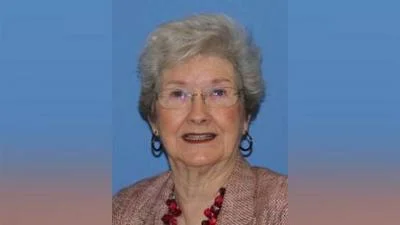City of Geneva Historic Preservation Commission met May 28.
Here is the minutes provided by the commission:
1. Call to Order
Chairman Zellmer called to order the May 28, 2019 meeting of the Geneva Historic Preservation Commission at 7:00 p.m.
2. Roll Call
Present HPC: Chairman Zellmer, Commissioners Hamilton, Hiller, Salomon, Warner,
Zinke
Absent: Commissioner Stazin
Staff Present: Historic Preservation Planner Michael Lambert; Community Develop- ment Director David DeGroot
Others Present: Christopher Aiston, Jonathan Fine, Fr. Mark Tusken, Virginia and William Spring, David Walker, John A. Temple, Arney Silvestri
Chairman Zellmer announced that Item No. 4 was removed from the agenda at the request of the applicant.
3. Review of Planned Unit Development
A. 325 S. Fourth Street – Larrabee House (Case #2018-115). Applicant: St. Mark’s Church, Chris Aiston, Arney Silvestry and David Walker. Application: Request to consider replacement of historic wood windows with aluminum-clad windows at a significant property. Historic Preservation Planner Michael Lambert recalled the commissioners had reviewed this proposal prior as a concept review and as final Planned Unit Development. The request was now before the commission for window replacement for the Larrabee House which was part of the St. Mark’s Church campus. Mr. Lambert reviewed the historical background for the 1854 significant home. A review of the window alternations over time also followed, along with historic photographs of the home, one of which had included a wrap-around porch originally.
Recalling that commissioners reviewed the project in June 2018 as a preliminary PUD, Mr. Lambert indicated he spoke and met with Mr. Walker and Father Tusken about the overall process and plans for the church, the window policy, the siding policy and the HPC review process. A timeline of events followed. The petitioner was now seeking an amendment to the PUD. Mr. Lambert reported that three images of existing windows and their condition were provided to him prior to the meeting. He recalled for commissioners that one of the requirements the commission sought, consistent with similar requests by other applicants, was a window survey to review the condition of the windows. Examples followed for reference. Also submitted by the applicant as case studies were photographs of two National Registered buildings that had window replacement: the American Brewery Company in Baltimore, Maryland and the Pizitz Building in Birmingham, Alabama. (Background on the two buildings followed.)
Representing the applicant, Mr. Christopher Aiston, a member of St. Mark’s Parish, summarized his professional background in regional planning and historic preservation. He reported that people visit the City of Geneva because it takes them back in time but they do not concern themselves as to whether windows on a building are wooden or vinyl-clad or if the siding is real wood or not. Mr. Aiston explained why it was preferred to replace the wooden windows in this project versus restoring them. He proceeded to review various sections of the City’s historic preservation ordinance as it pertained to this project, stating the preservation ordinance offered guidelines and that one should repair first rather than replace, assuming the windows are original or historic. He noted that staff also pointed out that many of the windows were not original and some had been replaced. Further reference to the ordinance’s provisions followed.
Mr. Aiston reviewed the definition of “feasible”, the analysis of the current windows, and discussed that much of the wood on the windows would have to be replaced. Some glass would have to be replaced due to it being broken and in order to meet safety regulations. Storm windows would be required for minimum energy-efficiency. Mr. Aiston referenced photographs of the existing windows, noting many used a counter-weight system and were not energy efficient. Upon further inspection, he reported that some of the second floor windows were installed within the interior of the aluminum frame to make them more functional. However, the character of the window was then changed.
Estimates of the window restoration and window replacement followed. Restoration of the current windows totaled $56,750.00 while window replacement from Marvin Design Gallery totaled $34,026.26, to which Mr. Aiston pointed out was a significant difference for the church.
Continuing, Mr. Aiston reviewed the definition of the terms “rehabilitation” and “restoration” and the differences between the two. In this case, the project plans included removing the existing siding and the wood underneath to be restored, along with creating the three-sided porch. Mr. Aiston then shared the recent movement in preservation and allowing the use of new windows versus restoring them – citing the Barrington Preservation District as an “Appearance District” over a “Preservation District” (Daily Herald, May 6, 2019) -- again, addressing his argument for the replacement of windows on the subject proposal .
Mr. Jonathon Fine, architectural project representative for Marvin Windows, discussed his professional background, stating he was one of the founding members of Preservation Chicago. He discussed that various agencies such as the National Park Service and the Illinois Historic Preservation Agency, were now allowing clad windows (in some cases ) on historic buildings. He provided commissioners with an informational packet and walked through photographs of some historic buildings that had windows replaced using Marvin windows. Mr. Fine presented a sample aluminum clad window that was proposed for the Larrabee House. He closed by reiterating that Marvin is known for its recreations of historic buildings and recommended the commissioners visit www.Marvin.com/inspirationgallery/casestudies.com. For the Larrabee House, Mr. Fine stated a .25 or .27 U value of window would be used.
Returning, Mr. Aiston explained that it cost more financially to restore the windows versus replacing them with improved energy efficiency. Additionally, he recalled in 1979 the siding was allowed to be added. In closing, Mr. Aiston relayed that the church could leave on the existing windows with storm windows in place and no one would know the difference. Instead, he stated the church wanted to restore the siding and was asking for consideration to replace the windows.
Mr. Lambert referenced his packet of window replacement/restoration information on the dais for commissioners. He referred to a study done for the National Trust for Historic Preservation as well as an on-line tool prepared by the Hutchinson, Kansas Historic Preservation Commission, which provided a guide to the documented value of replacement and repair of windows over time. In addition, Mr. Lambert shared that he had just received the updated cost estimates in his office from the weekend, but did not have time to thoroughly review all of the information. However, he did run a brief calculation of some of the numbers provided by the church into the on-line tool. Details of that review followed along with comparison figures. Mr. Lambert noted that—with the regional cost differences factored in, the replacement window estimate was within $10.00/window; however, the rehabilitation cost for the windows was far off from the suggested on-line tool estimate. Mr. Lambert noted that either the submitted rehabilitation estimate or the deterioration must be excessive given the disparity. Mr. Lambert reminded commissioners that, typically, a window-by-window survey is submitted but, in this case, only representative examples were furnished. He explained the window restoration bid from Historic Home & Window provided a “blanket cost” per window ($1850.00/a window) while the Marvin bid for replacement windows only included the window units themselves and did not include the labor to remove the window and trim, the replacement of exterior trim or the reinstallation of the trim/caulking, etc. Per Mr. Lambert, the figures should have been included for a fair comparison.
Further details of what information needed to be provided or better clarified by the applicant were discussed by Mr. Lambert who also acknowledged that this commission had previously approved the use of aluminum clad windows once restoration was determined to be cost prohibitive or windows had been deteriorated beyond reuse. He cautioned the commissioners about the information reported in the Barrington Historic District news article and provided an explanation of the inaccuracies of the article and his discussion with Village of Barrington staff.
Chairman Zellmer invited commissioner questions. None followed. Responding to staff’s comments, Mr. Aiston explained his quotes were from a local restoration professional and from local markets which were recommended by City staff. He did not ask the professional for a window by window replacement, but instead was provided a quote for the project and he provided photos of the general disrepair. Chairman Zellmer confirmed with Mr. Aiston that staff did ask for a window by window analysis to which Mr. Aiston explained he did not seek one and it was not required in the City’s preservation ordinance.
Mr. Arney Sylvestri, general contractor for the project, discussed his research for this project and proceeded to explain how the $1800 was broken out for each window, basically having to rebuild each window (interior portion). He would be responsible for the exterior of the window and trim on the building – another estimated $10,000. Asked how many windows were going to be replaced, Mr. Sylvestri could only indicate it was a majority of the second floor windows.
Mr. Aiston proceeded to point out that the church was at a junction and needed an answer tonight rather than delaying the project. Mr. David Walker, for the church, came forward explaining that he came before the commission a few months ago with the project, was giving the City a gift, and emphasized the need to have an answer because he was restoring a structure to last another 100 years. He discussed the building’s window insulation/storm window problems, the financial challenges of the building and hoped the commission would deviate from its preservation/window policy somewhat. In response, a contentious discussion between the commissioners and the applicants followed.
Mr. Aiston clarified the church was asking the commission to reconsider what was previously approved, explaining the church researched the matter more fully and decided to return to the commission for reconsideration. Mr. Aiston suggested that the house was not significant because—with Commission approval several years earlier—it had been moved 14 feet on the property and, therefore, had lost its historic context. Chairman Zellmer reiterated the commission’s desire to get all of the information it needed since it did not want to make assumptions. He confirmed with Mr. Lambert that the applicant had asked staff to change the permit (to replace the windows), wherein Mr. Lambert explained that a window by window survey was requested. In response, Mr. Aiston discussed that he did not recall staff asking for a window by window assessment until another email was sent by staff. However, Mr. Aiston explained that he did send staff a window by window survey but not to the specifics requested by staff.
Mr. Walker recalled the renderings he brought before the commission as they related to Commissioner Zinke’s questions about the siding, windows and corbels. He recalled at that time he could not answer specific questions such as whether the windows or siding would be saved, but he offered to save them at that time. Mr. Walker reminded the commissioners the windows were costly, the structure was not residential but a re-purposed building for public use, and he asked the commissioners for their help.
Commissioner Warner suggested that Mr. Walker consider doing the windows in phases as a solution. He also added that the commission was not a legislative body and that one standard applied to everyone.
(Mr. Lambert confirmed he did receive photos from Mr. Aiston on May 13th which included photographs but only 3 downloaded in the email and those were included in commissioners’ packets. Mr. Lambert did not recall seeing Mr. Aiston’s email reflecting the window renderings, but would check his email again. Upon a review of received emails on Dir. DeGroot’s mobile phone. Mr. Lambert did confirm receipt of the photographs on May 15th but the deadline was on May 4th. Mr. Aiston argued the date.)
Discussion followed. Mr. Walker came forward and explained some of the challenges he came across when dealing with the commission. In response, the chairman voiced the importance of following the City’s ordinance and also of precedence.
Commissioners voiced 1) the need to receive a side-by-side comparison of the figures to repair the current windows and the cost to replace them with new windows; 2) the fact that the HPC approved the applicant’s prior request; 3) comments about window efficiency of historic windows; and 4) concern about how the windows were measured.
Mr. Aiston produced three (3) pencil renderings of the windows he labeled on the structure, along with his photos, and asked the commissioners to focus their attention on the estimates from the restoration professional and the estimate from the Marvin Windows representative. He believed the issue within the ordinance was the definition of “feasible,” wherein the Chairman explained the overall frustration of not receiving all of the information to make the determination of what was feasible. Further dialog followed regarding the commission’s process and the challenge that was before it.
Commissioner Zinke recommended to table this matter. Commissioners agreed not enough information was available to make a decision tonight.
Father Mark, with St. Mark’s Church, addressed the commission and stated he lived in the structure from 1994 to 2002 and the concern was not the cost of the windows. His concern was that if the current windows remained they would continue to lack energy efficiency and the home would continue to be very cold. He believed the replacement windows would look as good as what currently existed.
Conversation followed, with frustration being voiced on both sides. Commissioner Warner discussed the window options before the applicant, liked the proposal for the reconditioned windows, and believed the contractor would ensure the building would be tight and more energy efficient than currently. While he supported Marvin windows, he reiterated the applicant should save what he can and buy what is needed. He believed the commissioners would appreciate knowing the percentage of what part of the window would be new wood.
Commissioner Zinke expressed concern about the applicant making a reference to changing the City’s ordinance, which she clarified was the City Council’s role. Commissioners relayed that they wanted to have the restoration professional make a presentation before the commission, bring an estimate of the percentage of wood replacement, receive the 200-plus photographs, and provide an all-inclusive comparison including removal and installation.
Motion by Commissioner Hiller to continue the meeting to the next regular HPC meeting, after Staff’s receipt of the requested documentation, in order for commissioners to hear a presentation by the window restoration professional, review a window-by-window analysis (with costs and pictures), and to review a complete estimate of the window restoration project. Second by Commissioner Zinke.
Mr. Walker briefly asked if historic windows could be returned if they were found throughout the construction, wherein commissioners encouraged him to return any historic windows back to the structure.
Roll call:
Aye: Hamilton, Hiller, Salomon, Warner, Zinke, Zellmer
Nay: None MOTION PASSED. VOTE 6-0
4. Review of Building Permit Applications – REMOVED.
A. 305 S. River Lane (Case #2018-017). Applicant: Tom and Jayne McCulloch, owners; Brad Colby with BCB Carpentry & Contracting, LLC. Application: Request to consider replacement of historic wood windows with aluminum clad windows at a significant property.
5. Secretary’s Report (Staff Updates) – None.
6. New Business
A. From the Commission: Commissioner Zinke discussed the posts she has placed on Facebook, noting that overall, she was receiving positives comments about historic preservation during the month of May (Preservation Month.)
B. From the Public: None
7. Adjournment
There being no further business to come before the Historic Preservation Commission, the meeting was adjourned at 9:33 p.m. on motion by Commissioner Zinke, second by Commissioner Hamilton. Motion carried unanimously by voice vote of 6-0.
https://www.geneva.il.us/AgendaCenter/ViewFile/Minutes/_05282019-1421





 Alerts Sign-up
Alerts Sign-up